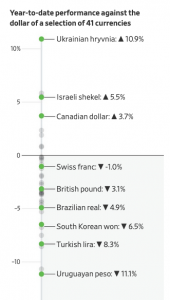My City Has Run Out of Fresh Water. Will Your City Be Next?
For at least 80 days, ever since drought and mismanagement sapped the drinking water supply of my country’s capital, the water that has come out of our taps has tasted terribly of salt and smelled awfully of chemicals. Those of us who can afford bottled water use it for everything. We cook pasta, wash lettuce and make coffee with it, buying more and more plastic water containers that wind up in the dump. When we shower, we keep it short and keep the windows open, because trihalomethane compounds in the steam may be carcinogenic. Washing machines don’t foam, and the electric water heaters are failing from a buildup of sodium. Dishwashers leave salty streaks on glasses and plates. Brushing your teeth tastes like taking a gulp of pool water. At the height of the crisis, sodium and chloride levels rose to double and triple the maximum values allowed by our national drinking water regulations. A few weeks ago, I visited a poor neighborhood on the outskirts of the city, where people had no other option than to drink the tap water. People complained of belly pain and diarrhea. The government warned that children under 2 years of age, pregnant women and people with high blood pressure, kidney failure or heart problems should limit their consumption of the water or, in some cases, avoid it altogether. Supposedly, poor people will now be getting a subsidy to buy bottled water. But that’s not enough.
Here in Uruguay, clean water is part of our national identity. Schoolchildren are taught that the country is blessed with abundant and high-quality water, thanks to many large rivers and six great aquifers. For most of our history, we could count on rain to fill these rivers and aquifers. And in 2004, we became the first country in the world to write access to safe drinking water into the Constitution.
More From The New York Times (subscription required):






